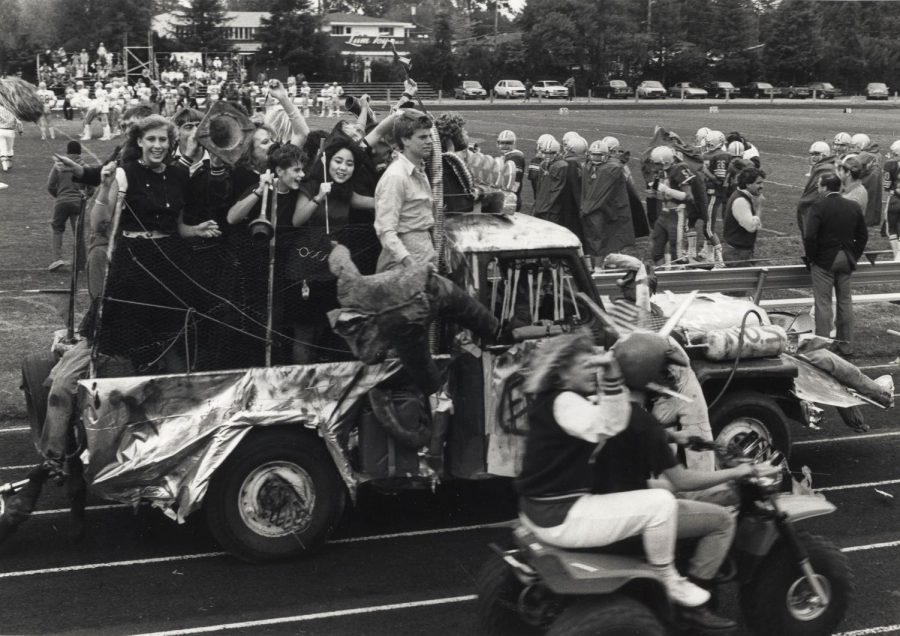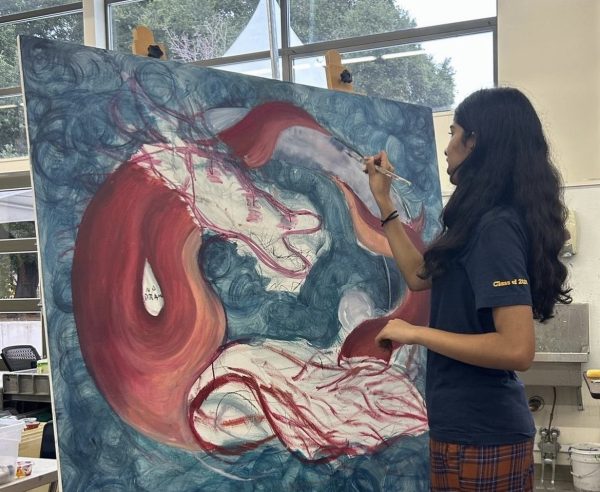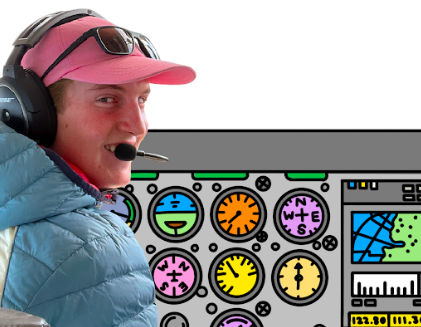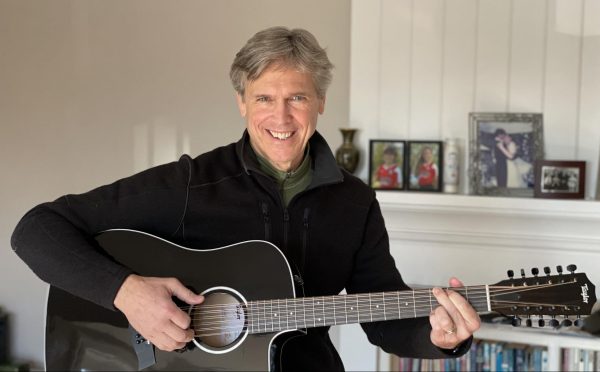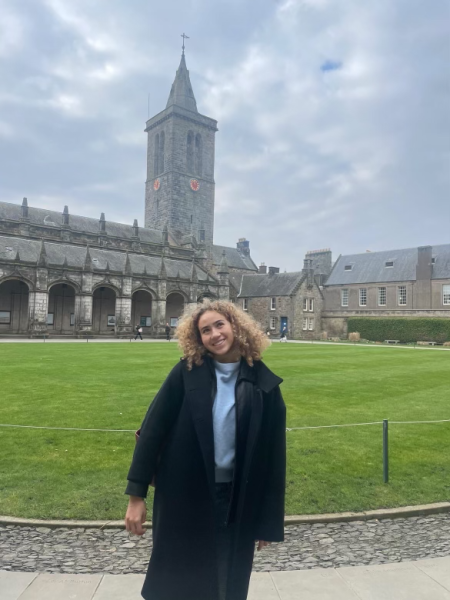Alumni Reflect on Menlo Changes
April 29, 2019
It’s half-time at a Menlo football game. Suddenly, a group of a dozen or so Menlo boys run through the bleachers and take the field, decked out in Menlo sweats, their faces covered in blue and gold paint. They start to dance ridiculously and out of sync, aiming more to entertain their classmates than to show off their skills. Meet the Knightmares, Menlo’s cheer squad in the ‘80s, a time when many of our parents attended high school.
If you were to walk onto Menlo’s campus in the same time period, you would find that the Upper School classroom was a converted dormitory, with showers still in some of the bathrooms. The Middle School, which was all-boys until 1993, was a one-story, low ceiling cinder block building. Instead of the CADC, the arts classroom was located in the recently-demolished dance room, and students would focus more on workshop arts, like building crossbows, among other projects. And where the gym is now, there were 15 or so bungalows forming a “village” where teachers could live on campus.
While Menlo’s traditions and buildings have certainly changed over time, according to Menlo alumni who are now Menlo parents, the spirit and values of the school remain largely unchanged.
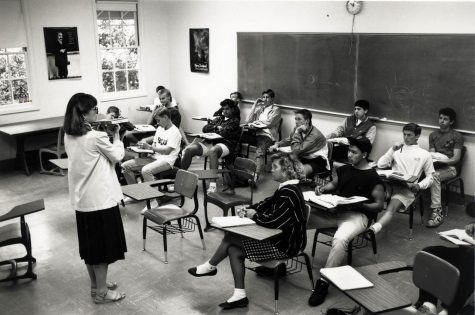
One of the aspects of Menlo that has stayed constant is the focus on relationships between students and teachers. “We were really close with our teachers, are still very close with them after all these years, and I can tell it’s still the same,” said Olivia Ward (‘86, mother of sophomore Langley Ward). Steve Miller (‘87, father of senior Jack Miller and junior Megan Miller), also highlighted the faculty and students’ relationships with them as a key, lasting aspect of Menlo. “The faculty then and now are incredible. Friends of mine are teachers, 30 years later,” Miller said.
However, Amy Sanford (‘84, mother of senior Beth Sanford) did note that some teachers were unwelcoming towards girls in the years after the Upper School became co-educational in 1979. “I had some excellent teachers that helped inspire me and prepare me for the world, but many of the teachers when I attended Menlo were not excited about girls infiltrating their all-boys school,” Sanford said.
Another aspect that has remained the same is Menlo’s strong academics and effectiveness at preparing students for college and beyond. “Since the time I was in school, Menlo has been a strong academic institution. What Menlo does best is prepare kids for college, and it did that when I was in high school also,” Sanford said. In addition to strong academics, Menlo has consistently been preparing its students for success in other areas. “I didn’t realize until I went to college how much Menlo had prepared me for life beyond the classroom in terms of leadership, organization skills and self-advocacy,” Miller said.
Parents believe that many of the changes Menlo has made are to adapt to a more stressful world for students with the hyper-competitive college admissions process. “Menlo does a better job [of] taking care of the whole student body with the college counselors [and] mental health counselors. Menlo cares more about the sanity of kids in today’s stressful times,” said Tito Bianchi (‘89, father of junior Sydney Bianchi). When he attended Menlo, the school published the academic ranking of each student within a grade, as well as where each student would attend college.
Many of the parents have also welcomed changes that address student workload, such as the block schedule. “The changes to the academic approach are a positive response to the pressures students may feel in a heightened competitive environment we are seeing,” said Scott Barkley (‘88, father of eighth grader Helen Barkley).
Another area of change has been the culture around school athletics. “If there’s going to be a football game on Friday, I don’t know that everyone is thinking about going to it, whereas it kind of seemed like that back [when I was in high school],” Ward said. Barkley attributes some of this change to the rise in popularity of club sports. “One change that saddens me at times is the influence of athletic club sports on the high school athletic experience. High school sports [used to be] the social and competitive center of athletic pursuits,” Barkley said.
Some of the parents believed that perhaps the most significant change since they attended is Menlo’s current focus on preparing students to be effective citizens, rather than just preparing them for college. “Menlo [now] does a better job preparing kids for a bigger world. Menlo in the ‘80s prepared students for college,” Bianchi said. “I don’t know that the Menlo of the ‘80s was preparing someone to have coworkers on a different continent and to contribute to society in a more global way.”


